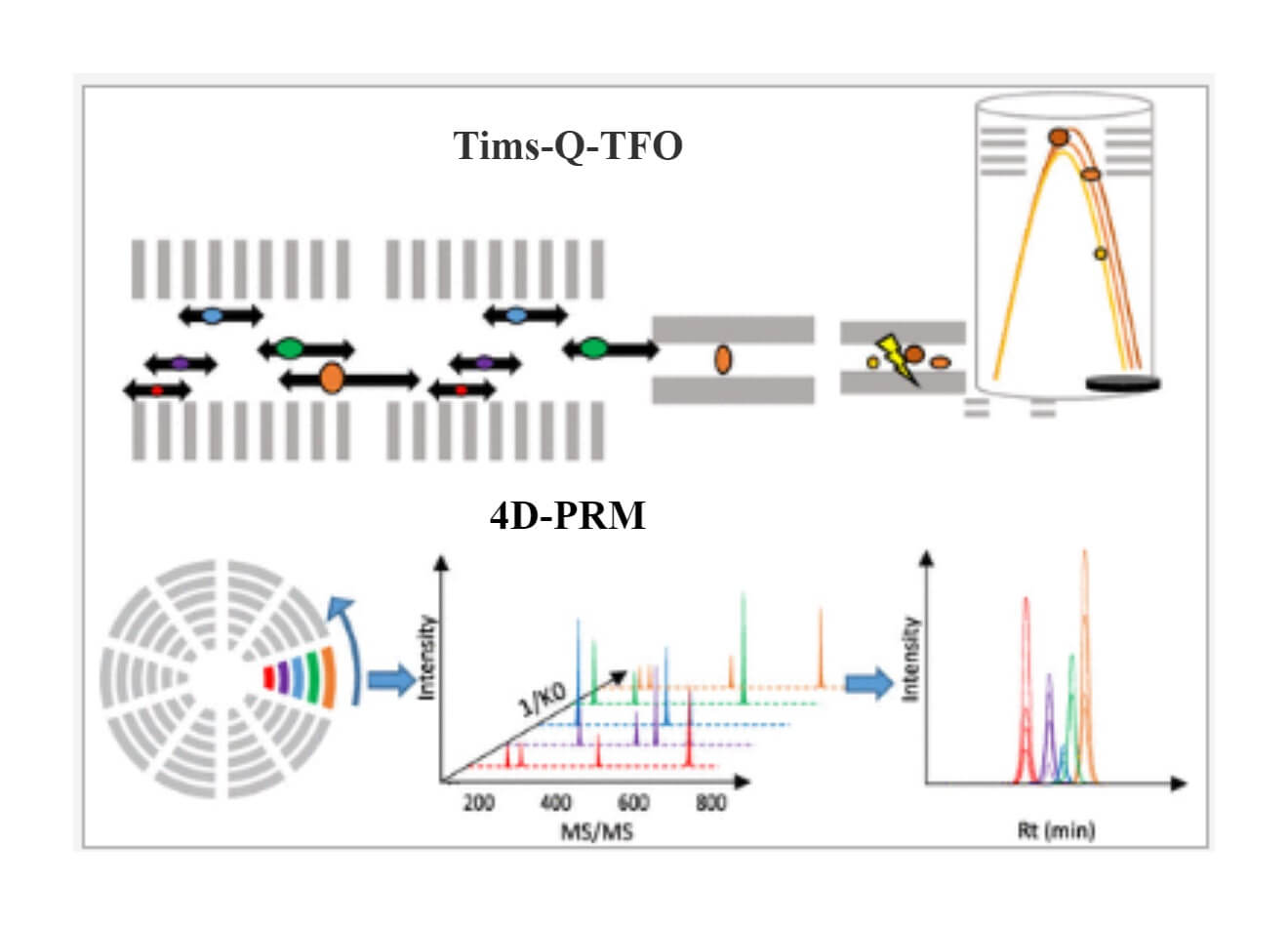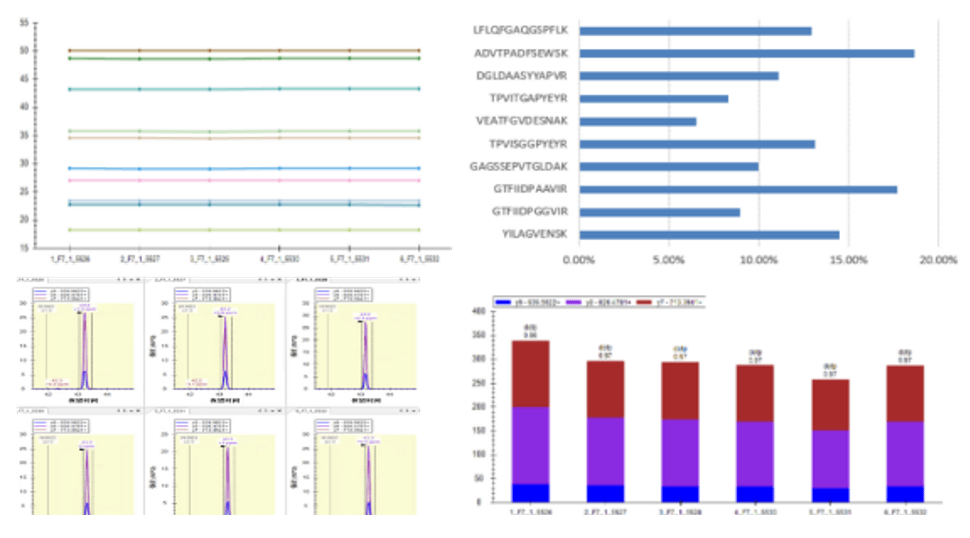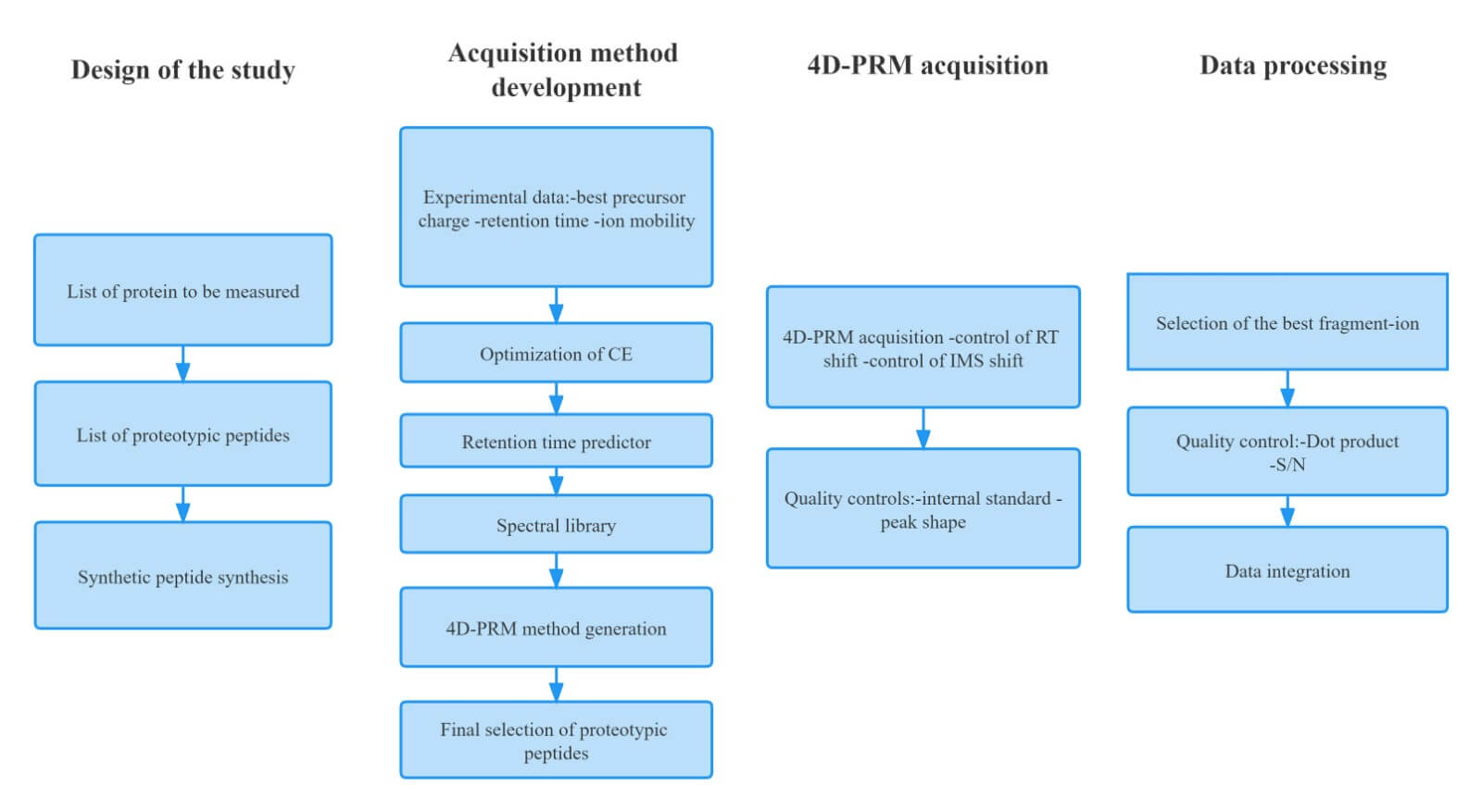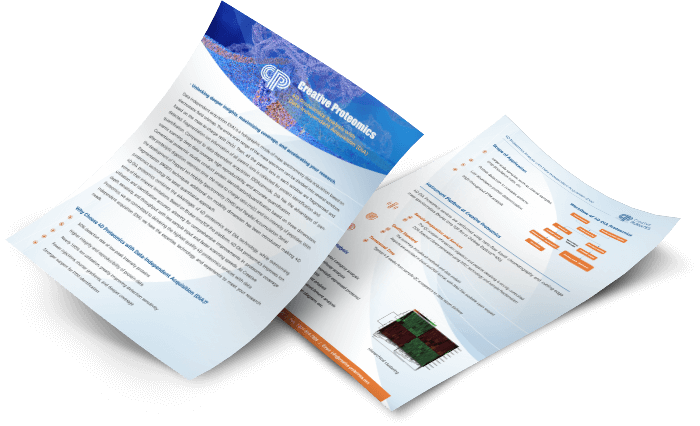4D-PRM Target Proteomics Services
Importance of Target Proteomics
Proteomics analysis of tissue and biofluids has been used to identify biomarker molecules and signatures in the clinical environment. The proteins composition of biofluid, such as serum or plasma, spans ten orders of magnitude and making it difficult to detect in the presence of the most abundant proteins. Although the analysis of top 1000 proteins can satisfy patient classification, identifying specific protein biomarkers requires the consistent measurement of less abundant components of the serum. Targeted proteomics, a profound proteomic analysis method, will allow the prior acquired information to measure a specific subset of proteins in the sample. A new targeted proteomics technology, 4D-PRM, enables faster and more accurate targeted proteomics detection, bringing the possibility of targeted proteomics in large cohorts.
4D-PRM Target Proteomics Services
4D-PRM introduces a fourth dimension and ion trickle proteomic, with the advantages of high reproducibility and accurate quantification, breaking the conventional proteomics limitations. 4D-PRM utilizes Tims for the fourth-dimensional separation, which improves the selectivity and sensitivity of peptide ions compared to 3D-PRM. Moreover, 4D-PRM enables faster and more accurate targeted proteomic assays. Overall, the high multiplexing capacity and short chromatographic separation utilization make 4D-PRM particularly useful for clinical applications and biomarker validation.
 4D-PRM mode (Antoine Lesur et al, Chem 2021)
4D-PRM mode (Antoine Lesur et al, Chem 2021)
Higher Throughput with 4D-PRM
Creative Proteomics has launched the 4D-PRM based on TimsTOF Pro to validate 100 differential proteins in 60 min with gradient separations. The 4D-PRM is over 2 times higher throughput than 3D-PRM. Due to the high MS/MS scan speed of TimsTOF Pro, 4D-PRM can theoretically target more than 12 target ions per 100 ms Tims ramp time and more than 100 target ions in 1 s duty cycle and enables 4D-PRM to quantify more proteins in the same amount of time.

Higher Selectivity with 4D-PRM
The acquisition window of 4D-PRM includes three dimensions: chromatographic retention time, ion mobility, and m/z. On TimsTOF Pro, when retention time and m/z of the precursor ions are the same, separation can still be done through ion mobility, enhancing the specificity and accuracy of quantification.
High Reproducibility and Accuracy with 4D-PRM
In 4D-PRM mode, the fast scanning capability allows acquiring more data and generating more MS/MS spectra with higher specificity, which significantly improves detection sensitivity and quantitative reliability.

Application
Verification: differential protein verification, mutation and modified site confirmation, etc.
Biomarkers: Biomarker screening, verification, absolute quantification, etc.
Our 4D-PRM Target Proteomics Services
Using advanced high-resolution mass spectrometers Thermo Orbitrap, Creative Proteomics can provide you with cutting-edge protein 4D-PRM targeting protein validation services for clinical applications and biomarker validation.
Workflow
 Stepwise 4D-PRM workflow (Antoine Lesur et al. Expert Review of Proteomics 2021)
Stepwise 4D-PRM workflow (Antoine Lesur et al. Expert Review of Proteomics 2021)
Instrument
Tims TOF pro
Sample Requirements
Animal and clinical tissue specimens: 100 mg/sample
Serum, plasma: 200 μL/sample
Cells, microorganisms: 1×107 cells/sample
Report
- Experimental steps
- Relevant experiment parameters
- Mass spectrometry spectra
- Raw data
- Proteomics analysis results
References:
- Antoine Lesur, et al., ASMS 2020 TP 470.
- Antoine Lesur & Gunnar Dittmar: Expert Review of Proteomics 2021.
* For Research Use Only. Not for use in the treatment or diagnosis of disease.

 4D-PRM mode (Antoine Lesur et al, Chem 2021)
4D-PRM mode (Antoine Lesur et al, Chem 2021)

 Stepwise 4D-PRM workflow (Antoine Lesur et al. Expert Review of Proteomics 2021)
Stepwise 4D-PRM workflow (Antoine Lesur et al. Expert Review of Proteomics 2021)
 4D Proteomics with Data-Independent Acquisition (DIA)
4D Proteomics with Data-Independent Acquisition (DIA)